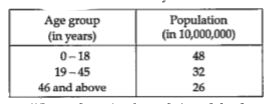Obtain approx. the ratio of the nuclear radii of the gold isotope .79Au197 and silver isotope .47Ag107.
To find the ratio of the nuclear radii of the gold isotope 19779Au and the silver isotope 10747Ag, we can use the formula for nuclear radius:
R=R0A1/3
where:
- R is the nuclear radius,
- R0 is a constant (approximately 1.2×10−15 meters),
- A is the mass number (or atomic mass).
Step 1: Identify the mass numbers
For the gold isotope 19779Au, the mass number A1=197.
For the silver isotope 10747Ag, the mass number A2=107.
Step 2: Write the formulas for the nuclear radii
Using the formula for nuclear radius, we can express the radii for both isotopes:
- For gold:
R1=R0A1/31=R0(197)1/3
- For silver:
R2=R0A1/32=R0(107)1/3
Step 3: Calculate the ratio of the nuclear radii
To find the ratio R1R2:
R1R2=R0(197)1/3R0(107)1/3=(197)1/3(107)1/3
Step 4: Simplify the ratio
Since R0 cancels out, we can simplify further:
R1R2=(197107)1/3
Step 5: Calculate the numerical value
Now we calculate 197107:
197107≈1.8383
Now take the cube root:
(1.8383)1/3≈1.225
Final Answer
Thus, the approximate ratio of the nuclear radii of the gold isotope 19779Au to the silver isotope 10747Ag is:
R1R2≈1.225
- R is the nuclear radius,
- R0 is a constant (approximately 1.2×10−15 meters),
- A is the mass number (or atomic mass).
For the gold isotope 19779Au, the mass number A1=197.
For the silver isotope 10747Ag, the mass number A2=107.
Using the formula for nuclear radius, we can express the radii for both isotopes:
- For gold:
R1=R0A1/31=R0(197)1/3
- For silver:
R2=R0A1/32=R0(107)1/3
To find the ratio R1R2:
R1R2=R0(197)1/3R0(107)1/3=(197)1/3(107)1/3
Since R0 cancels out, we can simplify further:
R1R2=(197107)1/3
Now we calculate 197107:
197107≈1.8383
Now take the cube root:
(1.8383)1/3≈1.225
Thus, the approximate ratio of the nuclear radii of the gold isotope 19779Au to the silver isotope 10747Ag is:
R1R2≈1.225
Topper's Solved these Questions
- NUCLEIBOOK - NCERT ENGLISHCHAPTER - NUCLEIEXERCISE - Exercise
31 Videos
- MOVING CHARGES AND MANGNETISM BOOK - NCERT ENGLISHCHAPTER - MOVING CHARGES AND MANGNETISM EXERCISE - Exercise
28 Videos
- RAY OPTICS AND OPTICAL INSTRUMENTSBOOK - NCERT ENGLISHCHAPTER - RAY OPTICS AND OPTICAL INSTRUMENTSEXERCISE - Exercise
32 Videos
Similar Questions
Uranium ores on the earth at the present time typically have a composition consisting of 99.3% of the isotope .92U238 and 0.7% of the isotope .92U235. The half-lives of these isotopes are 4.47×109yr and 7.04×108yr, respectively. If these isotopes were equally abundant when the earth was formed, estimate the age of the earth.
View SolutionUranium ores on the earth at the present time typically have a composition consisting of 99.3% of the isotope _92U238 and 0.7% of the isotope _92U235. The half-lives of these isotopes are 4.47×109yr and 7.04×108yr, respectively. If these isotopes were equally abundant when the earth was formed, estimate the age of the earth.
View Solution
Knowledge Check
The ratio of the nuclear radii of the gold isotope .19779Au and silver isotope .10747Ag is
A1.23B0.216C2.13D3.46Age-gender structure is one of the most important characteristics of population composition. Almost all population characteristics vary significantly with age. Age statistics form an important component of population analysis. The usefulness of age data is more noticeable when it is cross classified by variables like marital status, literacy, economic activity which vary with age in different patterns.
Suppose census report the population (approx.) of different age groups in the year 2020.

If r is the fourth proportional of the numbers of the ratio, obtained in (i), then the value of xA245B292C263D394
In the chemical analysis of a rock the mass ratio of two radioactive isotopes is found to be 100:1. The mean lives of the two isotopes are 4×109 years and 2×109 years, respectively. If it is assumed that at the time of formation the atoms of both the isotopes were in equal propotional, calculate the age of the rock. Ratio of the atomic weights of the two isotopes is 1.02:1.
View SolutionIn the chemical analysis of a rock the mass ratio of two radioactive isotopes is found to be 100:1. The mean lives of the two isotopes are 4×109 years and 2×109 years, respectively. If it is assumed that at the time of formation the atoms of both the isotopes were in equal propotional, calculate the age of the rock. Ratio of the atomic weights of the two isotopes is 1.02:1.
View SolutionGold .19879Au undergoes β− decay to an excited state of .19880Hg. If the excited state decays by emission of a γ-photon with energy 0.412MeV, the maximum kinetic energy of the electron emitted in the decay is (This maximum occurs when the antineutrino has negligble energy. The recoil enregy of the .19880Hg nucleus can be ignored. The masses of the neutral atoms in their ground states are 197.968255u for .19879Hg).
View SolutionIn a helium dilution refrigerator .3Heand.4He are mixed in a special chamber to obtain extremely low temperature. A Bainbridge mass spectrometer is used to measure the ratio of the two isotopes
(a) If the spectrometer were used with 100 V cm−1 between the plates and a magnetic field of 0.2 T, what would be the speed of an ion that can pass through the velocity filter?
(b) If the velocity-filter exit slit were 1 mm wide, could this machine resolve the two isotopes ?
View SolutionThe isotope of U238andU235 occur in nature in the ratio 140:1. Assuming that at the time of earth's formation, they were present in equal ratio, make an estimate of the age of earth. The half lives of U238 and U235 are 4.5×109 years and 7.13×108 years respectively. Given log10140=2.1461andlog102=0.3010.
View SolutionThe nuclei of two radioactive isotopes of same substance A236 and A234 are present in the ratio of 4:1 in an ore obtained from some other planet. Their half lives are 30min and 60min respectively. Both isotopes are alpha emitters and the activity of the isotope with half-life 30min is 106dps. Calculate after how much time their activites will become identical. Also calculate the time required to bring the ratio of their atoms to 1:1.
View Solution
